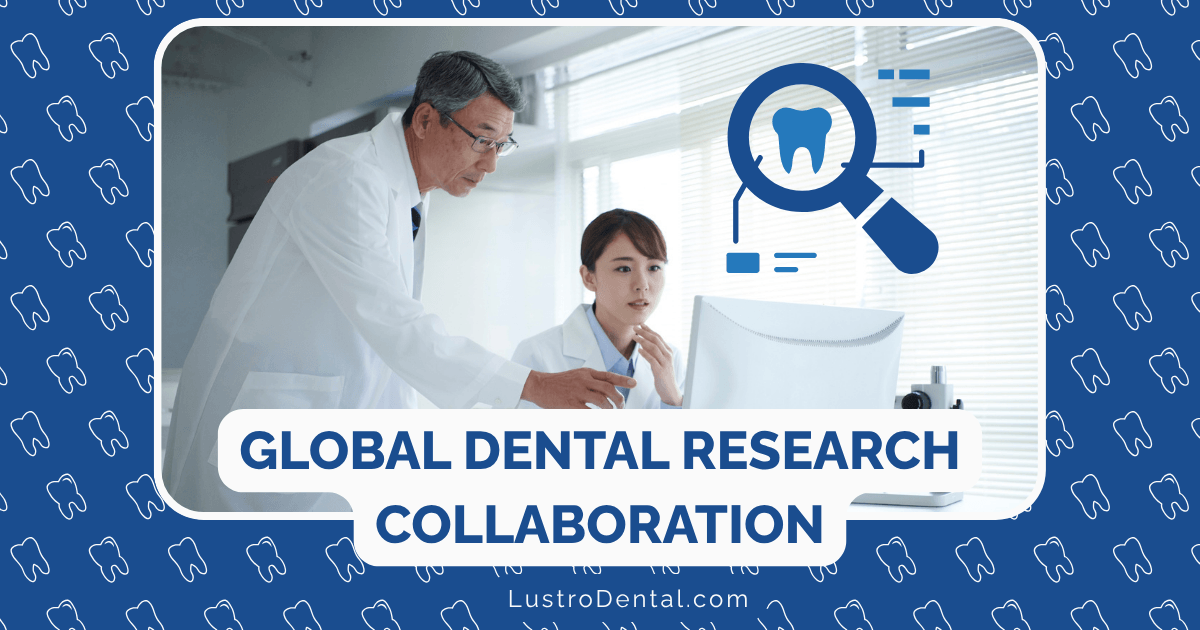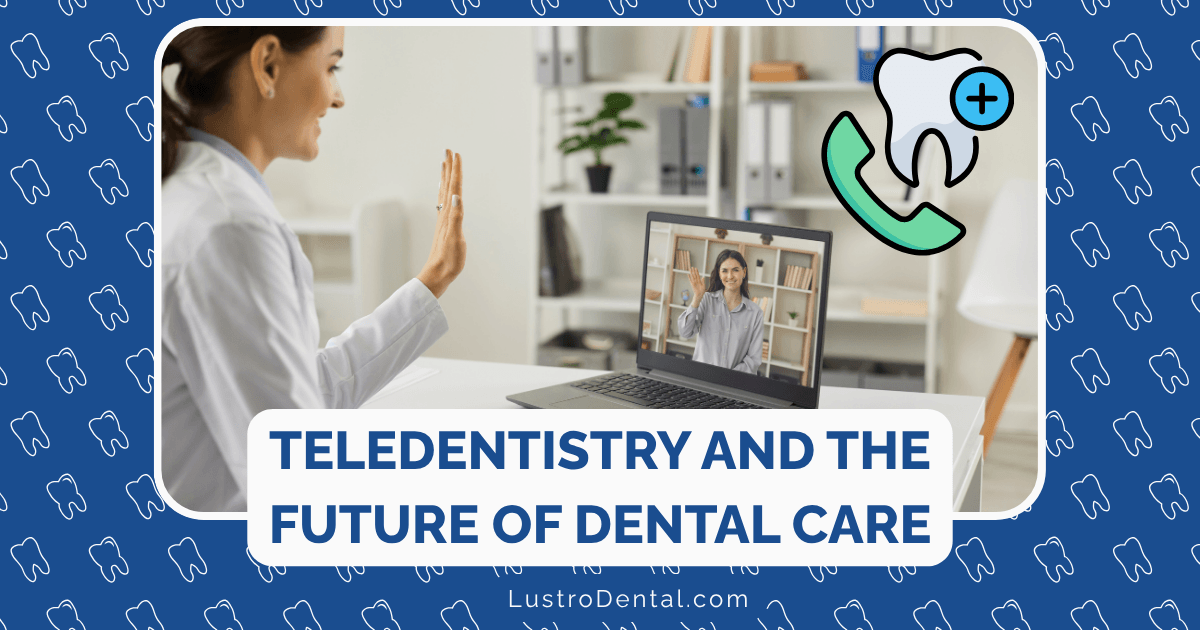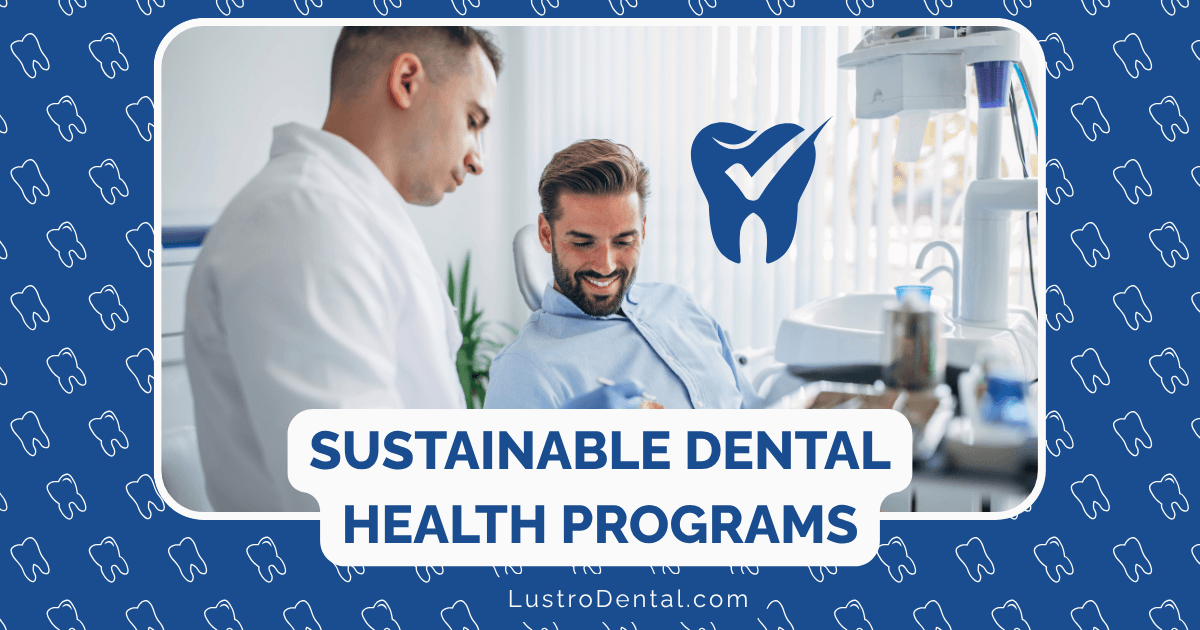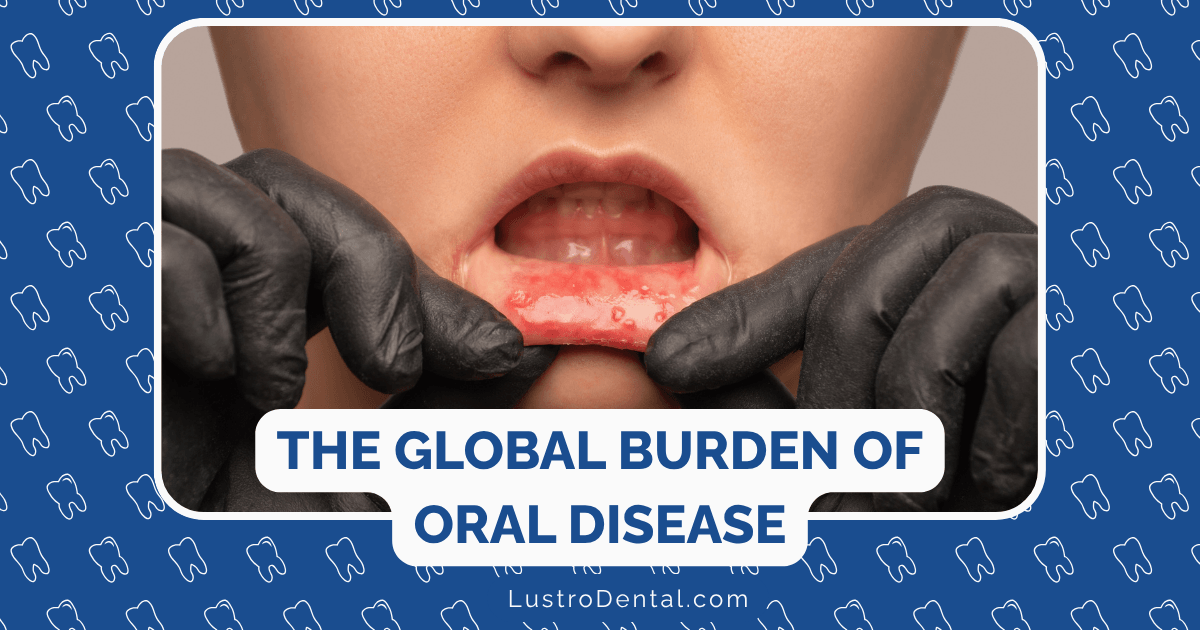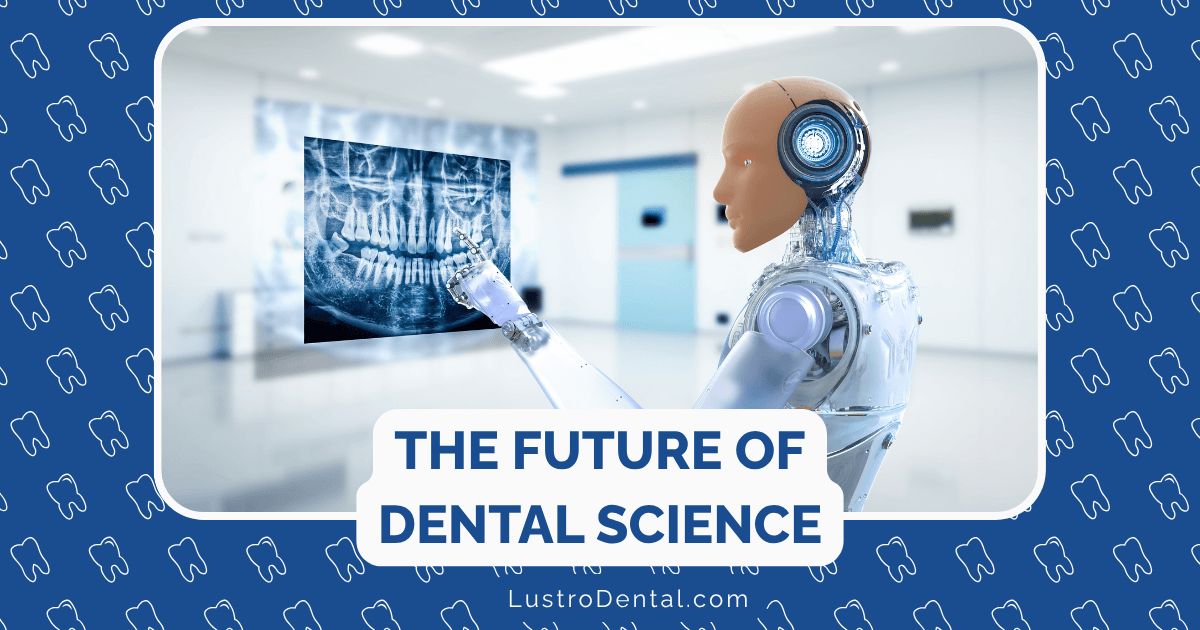Sugar Causes Cavities and Other Half-Truths: The Science Explained
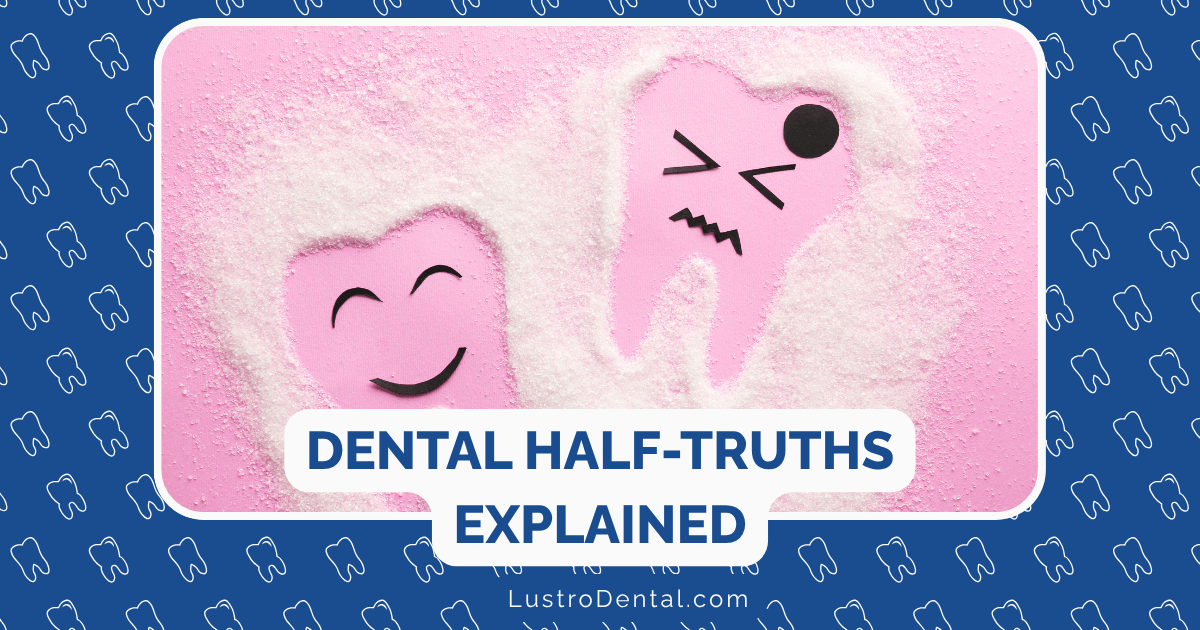
We’ve all heard the dental mantras: “Sugar causes cavities.” “Brush after every meal.” “Flossing daily prevents gum disease.” These simplified statements form the foundation of conventional dental wisdom passed from generation to generation. While these dental adages contain elements of truth, the complete scientific picture is considerably more nuanced.
In this deep dive into dental science, we’ll explore common dental “half-truths” that, while not entirely false, oversimplify complex biological processes. Understanding the complete science behind these statements can help you make more informed decisions about your oral health care routine.
Half-Truth #1: Sugar Causes Cavities
Perhaps the most ubiquitous dental advice is that sugar causes cavities. While there’s certainly a relationship between sugar consumption and tooth decay, the actual process is more complex than this simple cause-and-effect statement suggests.
The Complete Science:
Sugar itself doesn’t directly damage your teeth. Rather, it’s the perfect food source for certain bacteria that naturally live in your mouth, particularly Streptococcus mutans and Streptococcus sobrinus. When these bacteria metabolize sugar, they produce acids as a byproduct. These acids are the actual culprits that demineralize tooth enamel, eventually leading to cavities.
According to research published in the Journal of Dental Research, this process involves several stages:
- Bacterial Colonization: Bacteria form a biofilm (plaque) on tooth surfaces
- Sugar Metabolism: Bacteria consume fermentable carbohydrates
- Acid Production: Bacterial metabolism creates acidic byproducts
- Demineralization: Acids dissolve calcium and phosphate minerals from tooth enamel
- Cavity Formation: Continued demineralization eventually creates a cavity
Dr. Robert Genco, former editor of the Journal of Periodontology, explains: “The relationship between sugar and cavities is indirect but significant. It’s more accurate to say that acid produced by bacteria feeding on sugar causes cavities.”
What This Means for You:
- Frequency matters more than quantity: Research from the International Journal of Dentistry indicates that how often you consume sugar is more critical than how much you consume in a single sitting. Each sugar exposure triggers an “acid attack” that lasts about 20-30 minutes.
- Not all carbohydrates are equal: Simple carbohydrates like refined sugar cause rapid acid production, while complex carbohydrates like whole grains break down more slowly.
- Acid-producing foods: Some foods and beverages (like citrus fruits and sodas) are acidic themselves, bypassing the bacterial step and directly eroding enamel.
Half-Truth #2: Brushing After Every Meal Prevents Cavities
The recommendation to brush after every meal seems logical—remove food particles before bacteria can feast on them. However, this advice requires important qualifications.
The Complete Science:
When you consume acidic foods or beverages (including many fruits, juices, and sodas), your tooth enamel temporarily softens. A 2024 study in the Journal of Dentistry found that brushing immediately after acid exposure can actually accelerate enamel erosion by mechanically removing the softened surface layer.
Additionally, the protective benefits of brushing come primarily from:
- Physical disruption of bacterial biofilms
- Fluoride application to strengthen enamel
- Removal of food particles that feed bacteria
The timing of these interventions matters significantly.
What This Means for You:
- Wait after acidic foods: Ideally, wait 30-60 minutes after consuming acidic foods or beverages before brushing to allow your saliva to neutralize acids and begin remineralizing enamel.
- Rinse with water: After meals, rinsing with water helps neutralize acids and wash away food particles when immediate brushing isn’t advisable.
- Quality over frequency: Thorough brushing twice daily (morning and night) with proper technique is more effective than frequent, hasty brushing after every meal.
- Consider the meal composition: After consuming non-acidic foods, immediate brushing is less problematic.
Dr. Maria Rodriguez, dental researcher at University of California, notes: “The ‘brush after every meal’ recommendation needs context. Sometimes waiting is actually better for your enamel.”
Half-Truth #3: Flossing Daily Prevents Gum Disease
The importance of flossing has been a cornerstone of dental advice for decades. While flossing is indeed beneficial, its relationship with gum disease prevention requires clarification.
The Complete Science:
Gum disease (periodontal disease) develops through a complex interplay of factors:
- Bacterial biofilm accumulation
- Individual immune response
- Genetic predisposition
- Systemic health conditions
- Lifestyle factors (smoking, nutrition, stress)
A comprehensive review in the Journal of Clinical Periodontology found that while interdental cleaning (including flossing) reduces gingivitis symptoms, the evidence for preventing progression to periodontitis is less definitive.
The effectiveness of flossing also depends significantly on technique. A 2023 study in the Journal of Dental Hygiene revealed that over 80% of patients who reported regular flossing were using techniques that failed to effectively clean interdental spaces.
What This Means for You:
- Technique matters: Proper C-shaped flossing that curves around each tooth is far more effective than simply snapping floss between teeth.
- Consider alternatives: Interdental brushes and water flossers may be more effective for some individuals, especially those with wider spaces between teeth or dental work.
- Comprehensive approach needed: Flossing alone isn’t sufficient to prevent gum disease; regular professional cleanings, good nutrition, and addressing systemic health factors are also crucial.
- Personalized recommendations: Your dentist should assess your specific risk factors and recommend an appropriate interdental cleaning regimen.
Half-Truth #4: White Teeth Are Healthy Teeth
The cultural association between bright white teeth and dental health is powerful, fueling a multi-billion dollar whitening industry. However, this correlation requires significant qualification.
The Complete Science:
Natural tooth color varies widely between individuals due to:
- Genetic factors affecting enamel thickness and dentin color
- Age-related changes in enamel translucency
- Regional variations in water fluoride levels during tooth development
A 2024 comprehensive review in the Journal of Esthetic and Restorative Dentistry found no correlation between natural tooth shade and structural integrity or resistance to decay. Some naturally yellowish teeth can be structurally stronger than whiter teeth due to thicker enamel or denser mineralization.
Conversely, artificially whitened teeth aren’t necessarily healthier. Some whitening processes can temporarily increase tooth sensitivity or, if overused, damage enamel.
What This Means for You:
- Separate aesthetics from health: Tooth color alone isn’t a reliable indicator of dental health; regular dental exams are necessary to assess true oral health status.
- Understand natural variation: Natural tooth color exists on a spectrum from yellowish to bluish-white, all of which can be equally healthy.
- Use whitening judiciously: If pursuing whitening treatments, follow professional recommendations and avoid excessive applications that could damage enamel.
- Look for other health indicators: Clean gum lines, absence of visible decay, and lack of sensitivity are better indicators of dental health than color alone.
Half-Truth #5: Cavities in Baby Teeth Don’t Matter
The notion that decay in primary (baby) teeth is inconsequential because “they’ll fall out anyway” remains surprisingly common. This perspective significantly underestimates the importance of primary dentition.
The Complete Science:
Primary teeth serve several crucial functions beyond chewing:
- Maintaining space for permanent teeth
- Guiding proper eruption of permanent teeth
- Supporting proper speech development
- Contributing to facial structure development
Research published in the Journal of the American Dental Association demonstrates that untreated decay in primary teeth can lead to:
- Painful infections that affect eating, sleeping, and learning
- Premature tooth loss that disrupts permanent tooth eruption patterns
- Increased risk for decay in permanent teeth
- Systemic health complications from oral infections
A longitudinal study in the Journal of Public Health Dentistry found that children with untreated decay in primary molars were 3.4 times more likely to develop decay in their permanent first molars.
What This Means for You:
- Prioritize primary tooth care: Establish good oral hygiene habits from the eruption of the first tooth.
- Seek prompt treatment: Address decay in primary teeth as diligently as you would for permanent teeth.
- Consider the full impact: Recognize that primary tooth health affects speech, nutrition, self-confidence, and future dental development.
- Follow professional guidance: Adhere to pediatric dentist recommendations for treatment, which may include fillings, crowns, or in severe cases, extraction with space maintenance.
Half-Truth #6: More Brushing Pressure Equals Cleaner Teeth
The intuitive assumption that brushing harder cleans better has led many people to apply excessive pressure during brushing. However, this approach can actually cause significant damage.
The Complete Science:
Dental plaque is a soft biofilm that requires relatively little mechanical force to disrupt. A 2023 study in the Journal of Clinical Dentistry found that:
- Light pressure (around 150 grams, or the weight of an orange) removes plaque just as effectively as heavy pressure
- Pressure exceeding 250 grams contributes to enamel abrasion and gingival recession
- Technique and coverage of all tooth surfaces matter more than force
- Brushing duration (2 minutes minimum) is more important than pressure
Advanced toothbrush designs now often include pressure sensors precisely because excessive force is so common and damaging.
What This Means for You:
- Lighten your grip: Hold your toothbrush with a pencil grip rather than a fist to naturally reduce pressure.
- Focus on technique: Use small circular motions or the Bass technique (45-degree angle to the gumline with gentle vibration) recommended by dental professionals.
- Consider electric options: Many electric toothbrushes include pressure sensors that alert you when you’re brushing too hard.
- Watch for warning signs: Splayed bristles on your toothbrush, receding gums, or increased sensitivity may indicate excessive brushing pressure.
Half-Truth #7: Mouthwash Is a Substitute for Brushing or Flossing
Commercials often portray mouthwash as a comprehensive cleaning solution, creating the impression that a quick swish can replace more time-consuming oral hygiene practices.
The Complete Science:
Mouthwash serves specific functions in oral hygiene, but with important limitations:
- Most over-the-counter mouthwashes reduce bacteria temporarily but don’t remove established plaque
- Antimicrobial ingredients like chlorhexidine or cetylpyridinium chloride can reduce bacterial load but can’t penetrate existing biofilms effectively
- Fluoride mouthwashes strengthen enamel but don’t clean tooth surfaces
- The mechanical action of brushing and flossing is necessary to disrupt plaque biofilms
A systematic review in the International Journal of Dental Hygiene concluded that while mouthwash provides additional benefits when used with proper brushing and interdental cleaning, it shows minimal effectiveness when used alone.
What This Means for You:
- Use mouthwash as a supplement: Consider it an addition to, not a replacement for, mechanical cleaning methods.
- Choose purposefully: Select mouthwash based on specific needs (fluoride for cavity prevention, antimicrobial for gum inflammation, etc.).
- Time it right: Use mouthwash at a different time than brushing to extend fluoride exposure throughout the day.
- Follow directions: Adhere to recommended usage frequency to avoid potential side effects like altered taste perception or oral microbiome disruption.
Half-Truth #8: Natural Sugars Don’t Cause Cavities
The health food movement has sometimes promoted the idea that natural sugars (from fruits, honey, maple syrup, etc.) are fundamentally different from refined sugars in terms of their effect on dental health.
The Complete Science:
From a microbiological perspective, most sugars—whether natural or refined—can be metabolized by oral bacteria to produce acids. However, important contextual factors affect their cariogenicity (cavity-causing potential):
- Physical form matters: Whole fruits contain fiber and require chewing, which stimulates saliva production that helps neutralize acids.
- Delivery method affects exposure: Honey consumed in tea exposes teeth differently than honey eaten directly from a spoon.
- Natural packaging can help: Sugars in whole foods often come with water, fiber, and other components that reduce their harmful effects.
- Chemical structure varies: Fructose, glucose, and sucrose have slightly different cariogenic potentials, but all can contribute to decay.
Research in the European Journal of Nutrition confirms that while natural sugar sources may have additional nutritional benefits, their fermentable carbohydrates still support acid production by oral bacteria.
What This Means for You:
- Consider context: Eating an apple is different from drinking apple juice in terms of dental impact.
- Be aware of “health halos”: Don’t assume natural sweeteners like honey or agave nectar are better for teeth—they still feed acid-producing bacteria.
- Practice protective habits: Rinse with water after consuming natural sugars, especially in sticky or concentrated forms.
- Time consumption strategically: Consume sugary foods, even natural ones, as part of meals rather than as frequent snacks to limit acid exposure.
Half-Truth #9: You’ll Know When You Have a Cavity Because It Will Hurt
The belief that dental problems announce themselves with pain leads many people to delay regular check-ups, assuming they’ll seek treatment when symptoms develop.
The Complete Science:
Tooth decay progresses through several stages before causing noticeable pain:
- Initial demineralization: Microscopic weakening of enamel with no symptoms
- Early enamel decay: Still typically asymptomatic
- Dentin involvement: May cause mild sensitivity to sweets or temperature
- Pulp involvement: Usually causes significant pain
- Abscess formation: Severe pain and potential systemic complications
A 2024 study in the Journal of Endodontics found that over 60% of teeth requiring root canal treatment had advanced decay that developed without significant pain until reaching the pulp chamber.
The reason for this silent progression is that enamel contains no nerve fibers. Pain typically occurs only when decay reaches the dentin (which has some nerve endings) or the pulp (which is richly innervated).
What This Means for You:
- Don’t wait for pain: Regular dental examinations can identify decay in early, more easily treatable stages.
- Pay attention to subtle signs: Mild sensitivity, visible discoloration, or rough spots may indicate decay before pain develops.
- Understand risk factors: If you have a history of cavities, dry mouth, or frequent snacking, you may be developing decay even without symptoms.
- Consider detection technology: Ask your dentist about advanced cavity detection methods that can identify decay before it’s visible to the naked eye.
Half-Truth #10: Teeth Whitening Damages Enamel
With the popularity of whitening treatments, concerns about potential damage have become widespread. The reality is more nuanced than a simple “yes” or “no” regarding enamel damage.
The Complete Science:
Modern tooth whitening typically works through hydrogen peroxide or carbamide peroxide that penetrates enamel to break down stain molecules. Research from the American Journal of Dentistry shows that:
- Professional-strength whitening agents can temporarily alter enamel microhardness, but these changes reverse within days to weeks as saliva remineralizes the surface.
- Over-the-counter products with lower peroxide concentrations (typically 3-10%) show minimal effects on enamel structure when used as directed.
- Abrasive whitening toothpastes can potentially wear enamel if used excessively or with heavy pressure.
- Individual susceptibility to whitening-related sensitivity varies significantly based on enamel thickness and microstructure.
The primary concern with whitening isn’t permanent structural damage but rather temporary sensitivity and potential soft tissue irritation.
What This Means for You:
- Follow professional guidance: Adhere to dentist recommendations and product instructions regarding application frequency and duration.
- Use desensitizing products: Consider products containing potassium nitrate or fluoride before and after whitening treatments.
- Avoid excessive treatments: More frequent or longer applications don’t necessarily improve results and may increase sensitivity.
- Consider your starting point: Individuals with thin enamel or existing sensitivity should approach whitening cautiously.
Practical Implications: Beyond the Half-Truths
Understanding the complete science behind these dental half-truths empowers you to make more nuanced decisions about your oral health care. Here are key takeaways for evidence-based dental care:
Rethink Your Relationship with Sugar
Rather than simply avoiding sugar:
- Consider timing: Consume sugary items with meals when saliva flow is highest
- Limit frequency: Reduce the number of sugar exposures throughout the day
- Choose wisely: Opt for less sticky forms of sugar that clear from the mouth more quickly
- Rinse after consuming: Use water to help neutralize acids and wash away particles
Optimize Your Brushing Strategy
Instead of focusing solely on frequency:
- Master technique: Ensure you’re reaching all tooth surfaces with proper angulation
- Time appropriately: Wait 30-60 minutes after acidic foods or drinks
- Use adequate duration: Brush for at least two minutes, dividing your mouth into quadrants
- Select appropriate tools: Choose soft-bristled brushes and fluoride toothpaste approved by dental organizations
Personalize Your Preventive Approach
Work with dental professionals to develop a prevention plan based on your specific risk factors:
- Saliva flow and composition: Affects natural remineralization and bacterial clearance
- Oral microbiome: Some bacterial profiles create higher cavity risk
- Dietary patterns: Frequency and composition of meals and snacks
- Medical conditions: Many health issues and medications affect oral health
- Genetic factors: Family history can indicate predisposition to certain dental problems
Conclusion: Evidence-Based Dental Care
The simplified dental advice we’ve all heard contains valuable core truths but often lacks the context and nuance needed for optimal oral health decisions. By understanding the complete science behind these dental half-truths, you can move beyond simplistic rules to evidence-based practices tailored to your unique needs.
Remember that dental science continues to evolve. The American Dental Association and other professional organizations regularly update their recommendations based on emerging research. Maintaining open communication with dental professionals and staying informed about evidence-based practices will help you separate dental facts from fiction and half-truths.
Your dental health deserves more than simplified slogans—it deserves the complete scientific picture.
What dental “truths” have you questioned or found surprising? Share your thoughts and experiences in the comments below.


